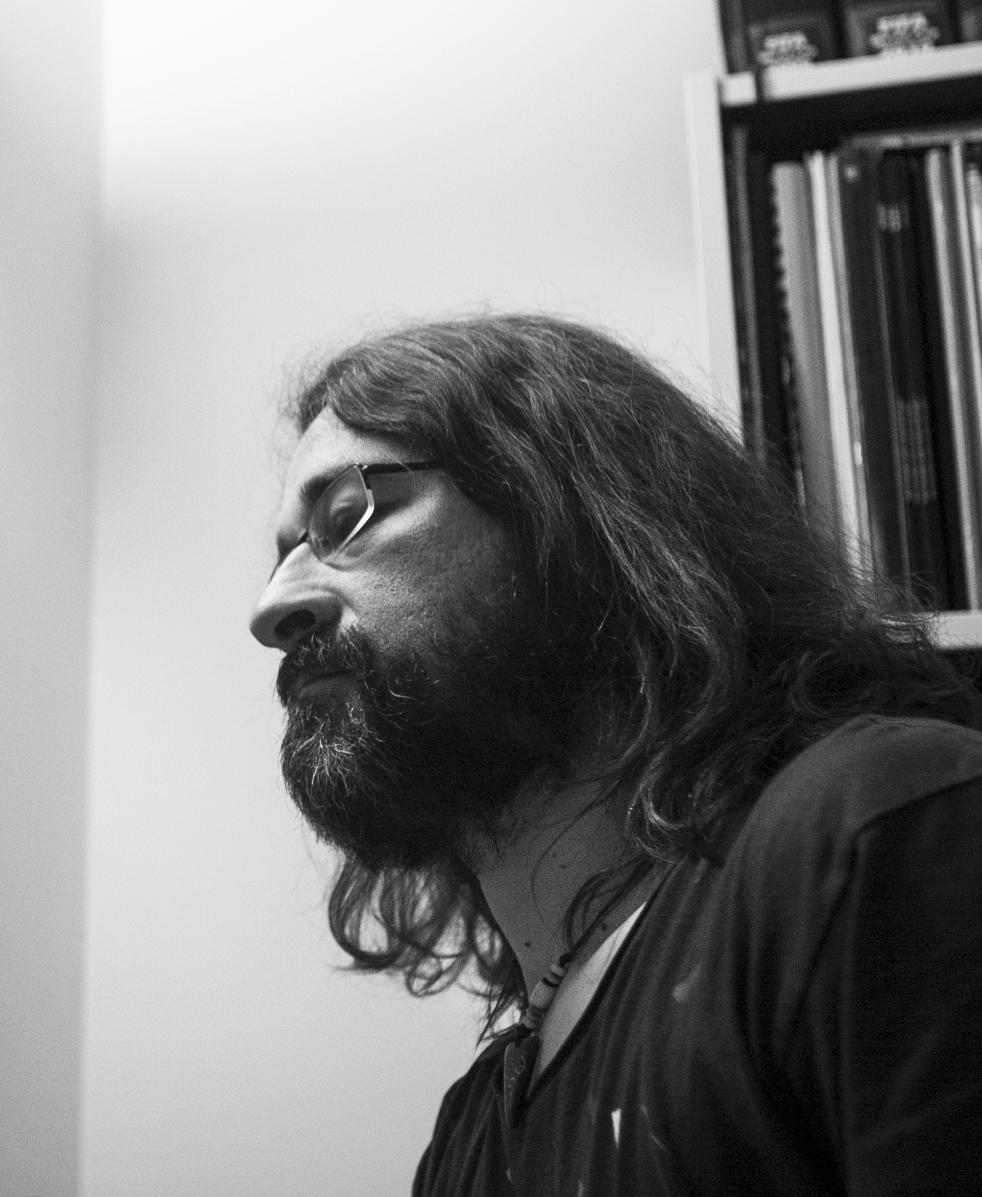 |
Nihat Emin Güven Nihat Emin Güven graduated from Ankara University - American Literature Dept. in 1996 and earning his life as a freelance graphic artist in Ankara. He started playing guitar in early 80s. He was the co-founder and lead-guitar of the soft rock band "The Mood." which was formed in 1987 in Ankara. The band delivered several concerts with their own compositions in Ankara and had been invited to the first rock festival in Bursa (1988). In Early 90s, he joined "Labirent", one of the first Turkish language progressive rock bands, as lead-guitar. They gave several concerts, and appeared on several radio and TV programs together. |
|
In mid 90s, whilst on one hand I was digging into guitar
playing techniques, I had developed a sudden interest in classical music having chanced upon a score-book, which belonged to a notable music teacher,
Günes Apaydin, in Ankara; it was
full of chords and melodic lines of famous classical works. While
trying to play J.S. Bach's Air (from Suite No.3) on guitar, I had recorded some
lines and chords on a tape as a backing track and playing the main line along
with it, I realized that this was sounding amazing! In awe of the profound
technical competency, elaborate work and the intensity of feeling, I was now
absolutely certain that this kind of music was going to be the ideal tool that I
can use to express my own ideas and feelings. It was clearly far more capable
and powerful than the popular genres. I, then, had decided to devote my life to
understanding the components of musical theory. He started off with some widely-acknowledged academical sources on harmony, counterpoint, form, orchestration, instrumentation, etc. such as those books written by Hindemith, Rimsky-Korsakov, Berlioz, Samuel Adler, Forsyth, Salzer, etc. On the other hand, he was also eagerly delving into the depths of classical music literature, analyzing works thoroughly and reading inspiring life stories of great classical composers. Hector Berlioz had been his main influence; particularly his works Symphonie Fantastique and Harold én Italie. I have written my first classical composition, a string quartet in 1992. I could only hear it on a primitive sequencer, which I had borrowed from a friend. In later years, I have enlarged it into an orchestral suite with 7 movements, each for a major love affair in my life. I was much more interested in the grandeur of the symphonic orchestra. Thus, first thing I did when I got my first job was to apply for a bank loan; so I had been able to buy that renowned workstation Korg O1/Wfd with some difficulty. It really gave a boost to my orchestral studies, with its 16-channel sequencer and samples of orchestral instruments with acceptable quality. It was the most productive period of my life. Then, in the late 90s, I started working with "soundfonts" and other sampling technologies followed them. I have spent quite a good time on editing and sampling orchestral music on sequencers and had gained significant experience in this field. I keep using alias as "Wondian National Symphonic Orchestra" coming from my imaginary country Wondiana for my classical edits, and several nicknames for conductors, according to the sampling technology used: e.g. "Corgi Owan" for Korg O1. After the arrival of Korg O1/W, he also started playing keyboards and working with sampled orchestral sounds on MIDI sequencer. In the late 90's he bought a PC and moved on to the renowned "Soundfont" technology, a trade mark developed by E-mu Systems and Creative Labs. In the course of 2000s and 2010s, he followed new sampling technologies closely and developed unique techniques for sounding individual instruments of the orchestral family and creating overall realism with his immense experience in working with orchestral samples more than 20 years. I've been writing relatively short orchestral pieces, about 10-20 minutes long, which I used to call "Symphonic Overture." I think it is the closest form in the classical literature; but actually I'm not strictly following that specific pattern. They are actually spontaneous, ad libitum forms with somewhat dramatic or picturesque fabric, weaved with a freedom of style. I have recently adopted a new title, an invented word "symphoniscape" with the combination of "symphonic" and "landscape" (thanking Gökhan Yilmaz for the hint!). I think now this term has been a better representation of this short orchestral form. There are 16 symphoniscapes written so far, however some are yet to be completed; I am planning to publish them in the short term as 4 albums with 4 pieces each. First album is already released by Mireille Music, New York. Following albums are on the table. Favorite Composers/Influences: Hector Berlioz, Claude Debussy, Antonín Dvořák, Pyotr I. Tchaikovsky, Igor Stravinsky, Dmitri Shostakovich, Felix Mendelssohn, Bela Bartok, Gustav Holst, Edvard Grieg, Edgard Varèse, Krzysztof Penderecki, John Williams, Jerry Goldsmith, Ennio Morricone, Howard Shore. |
|